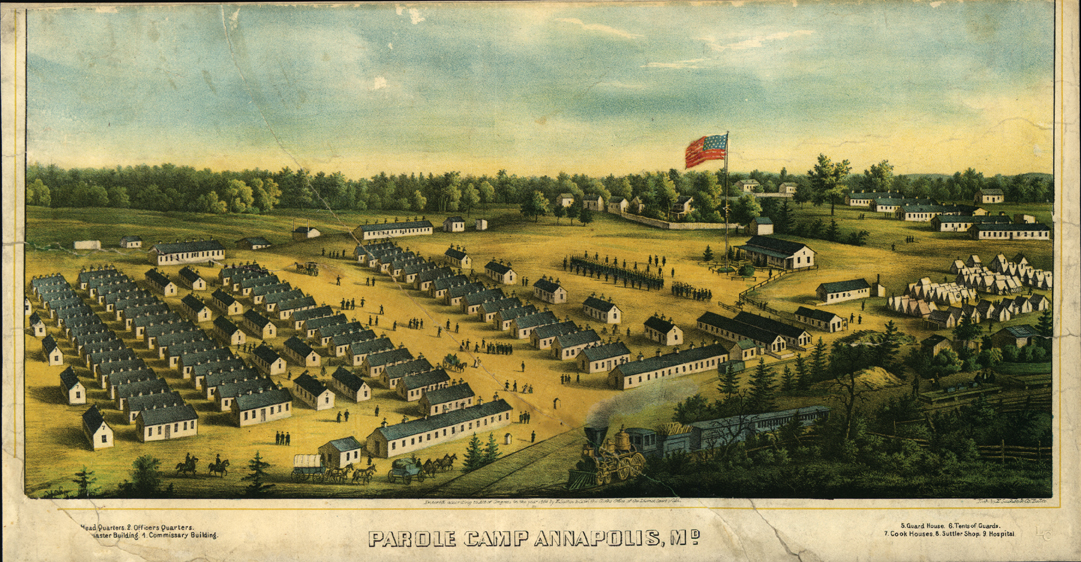Straddling Secession: Thomas Holliday Hicks and the Beginning of the Civil War in Maryland
- Hicks Exhibit Home
- The Gathering Storm
- Baltimore and Annapolis
- Calling the Legislature
- Burning the Bridges
- A Plot Aganist Lincoln?
- The War After Hicks
Baltimore and Annapolis

Rioting in Baltimore, April 19, 1861
From Harper's Weekly, May 4, 1861
MSA SC 4645-6-2
While Hicks continued to insist that the time was not right for a special session, events around the country continued to build towards war. On April 12, 1861, southern troops shelled and captured Fort Sumter in Charleston, South Carolina. With the beginning of armed conflict, the Federal government began to mobilize troops, and started to reinforce Washington. Protecting the national capital quickly was critical, since it was surrounded by two states, Maryland and Virginia, with large secessionist populations.
Bringing troops into Washington by train required passing through Maryland and crossing Baltimore on foot to change trains, a dangerous proposition. On April 19, soldiers from the 6th Massachusetts Regiment were attacked in Baltimore, sparking riots that killed five soldiers and twelve civilians, depicted in the engraving above. Hicks and Baltimore Mayor George William Brown had requested that no Federal troops pass through Maryland, citing concerns that doing so would provoke violence and claiming that it was unconstitutional, or at least unjust, for Federal troops to enter the state. In an effort to prevent further violence in Baltimore, the Federal government instead brought troops by steamship to Annapolis, over Hicks' objections. For the duration of the war, Annapolis remained several important Union encampments, including Camp Parole, shown below at left, and an army hospital on the grounds of St. John's College.

U.S. General Hospital, Division No. 1, 1864
Courtesy of the Edward G. Miner Library
University of Rochester Medical Center

Parole Camp Annapolis, M'd.
E. Sachse & Co., 1864
Courtesy of the Library of Congress
|
This web site is presented for reference purposes under the doctrine of fair use. When this material is used, in whole or in part, proper citation and credit must be attributed to the Maryland State Archives. PLEASE NOTE: The site may contain material from other sources which may be under copyright. Rights assessment, and full originating source citation, is the responsibility of the user. |
© Copyright December 15, 2023 Maryland State Archives
